15. September 2000 11:05
by Rene Pallesen
0 Comments
In September 2000, just after I returned from my trip to Borneo, I had to buy this new car because my girlfriend had written off my car whilst I was away! *smile*
I did not look forward to hunting around for a new car, but I found a good buy locally. This car is a 1997 Ford Futura, with 4.0 litre, 6-cylinder, 220-horsepower, power-steering, central locking and electronic windows (I think I am starting to sound like a car advertisement...)
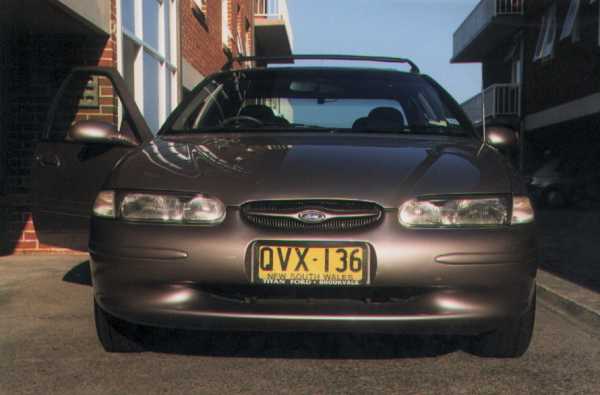

It is pretty much the same colour as my old car, and it feels so nice to drive!
As you can see, pretty similar, but I also really miss my old car! It had a lot of computerised features - from a digital odometer, to adjusting the internal temperature of the car. It was a pretty cool car and wished I could have kept it for another few more years.


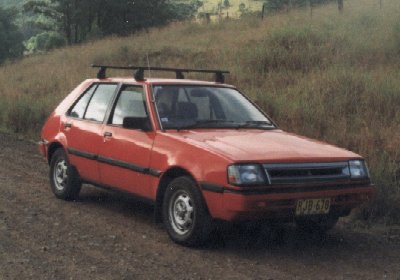
A huge contrast to my first car!
It is a red hatchback that I bought early 1998, a few months after I arrived in Australia. But someone wrote it off a few months after I bought it. It was a pretty bad accident, but luckily I was alright. I was only covered by Third Party insurance, and to go through a lot of paperwork just to get reimbursement for the car!
15. August 2000 10:43
by Rene Pallesen
0 Comments
Ecochallenge ( Sabah 2000 )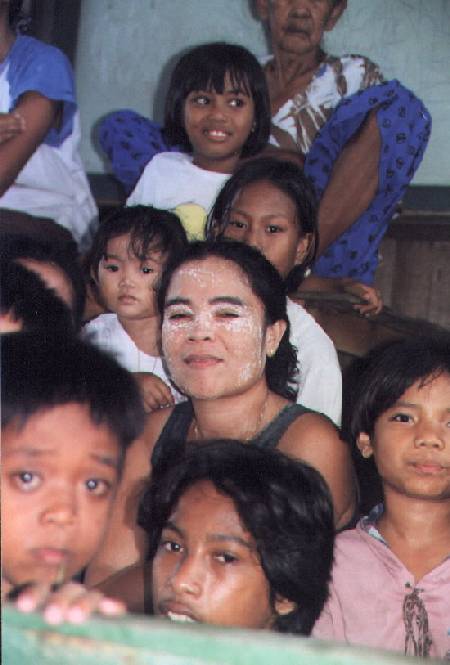 Away from Headquarters . . .I managed to explore the villages at Silam.
The people here wore this white stuff on their faces - I guess their form of sunscreen.
These people were refugees from the Philippines.
Away from Headquarters . . .I managed to explore the villages at Silam.
The people here wore this white stuff on their faces - I guess their form of sunscreen.
These people were refugees from the Philippines.

The kids were fighting to fit into the photo!
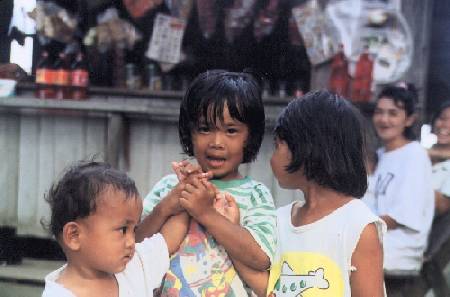
The kids here were really cute.
These kids here, had caught a monkey and was trying to sell it at the camp for 5 ringgit (AUD$2.50).
No-one wanted to buy it because they knew if they bought it, and set it loose, the kids would just catch it again, and try to sell it.
In general, there were lots of great photos at Silam village.
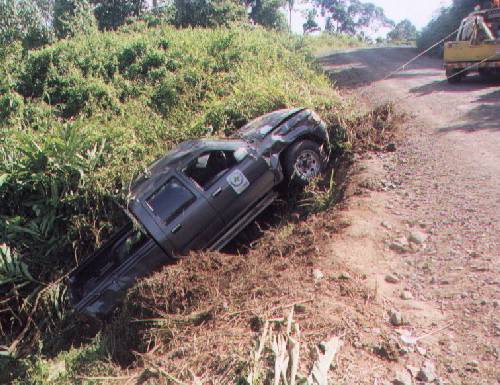
One of the helicopter pilots was driving through the jungle roads, took a corner too fast, and had a minor mishap.

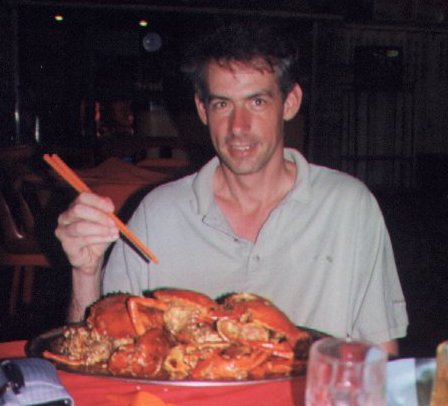 We headed into Lahad Datu to get some seafood!
An escape from camp food. Camp food was disgusting. There were live worms in the vegetables (yes, after cooked). Most of the food was not fresh, and was pretty boring. The seafood was fantastic here. Whenever we had the chance, we ate lots of seafood.
Yum... Paul did not get to eat all of the crabs - all of us had a portion of it.
We headed into Lahad Datu to get some seafood!
An escape from camp food. Camp food was disgusting. There were live worms in the vegetables (yes, after cooked). Most of the food was not fresh, and was pretty boring. The seafood was fantastic here. Whenever we had the chance, we ate lots of seafood.
Yum... Paul did not get to eat all of the crabs - all of us had a portion of it.
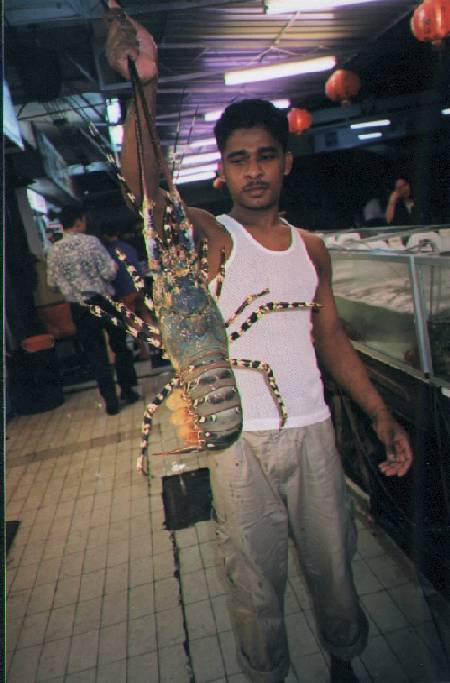
 Yummm... they were huge, but we did not eat them. They were too big for us to eat, pretty impressive though. They were the biggest lobsters I have seen in my life. We saw these at the same place we ate our seafood and frogs (below).
Yummm... they were huge, but we did not eat them. They were too big for us to eat, pretty impressive though. They were the biggest lobsters I have seen in my life. We saw these at the same place we ate our seafood and frogs (below).

We had this frog for dinner about 2 min after I took the photo.
This was actually when I went out with Glen in Kota Kinabalu - he asked me to pick some food and to surprise him.
I did not tell him till a year later that he ate frog meat. He asked me what it was, because he reckoned it tasted funny, but I did not tell him at the time.
I think he will only eat it again. Only if he really had to.
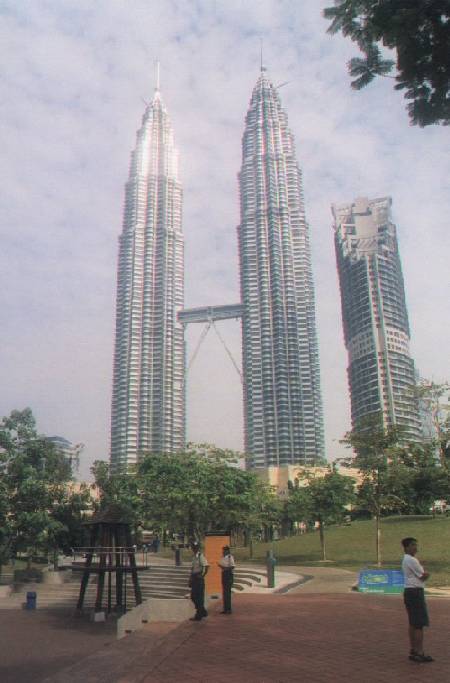
Petronis Towers - the tallest twin towers in the world.
Actually, they are the tallest buildings in the world, followed by the Sears Towers in Chicago.
The towers are joined by some sort pedestrian platform.
These towers are located in Kuala Lumpur.
I went to Kuala Lumpur to pick up my Permanent Residency for Australia.
Woohoo!!! After 2 years of lots of paperwork, and correspondence back and forth with Berlin, I finally managed to get it!
The inconvenience of it all, was that I actually had to leave Australia ie collect my PR before re-entering Australia.
Below, is the only photo I have of the Lateral Linking Team that I worked with during the race.
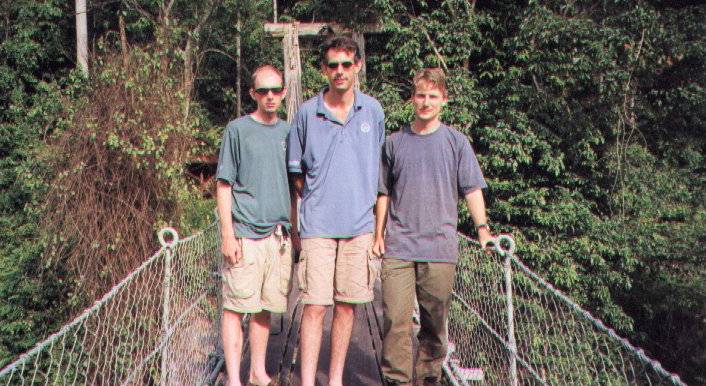 Back to TopReturn to Borneo Homepage
Back to TopReturn to Borneo Homepage
Created: 7 Dec 2001
15. August 2000 10:42
by Rene Pallesen
0 Comments
Ecochallenge ( Sabah 2000 )Helicopters . . .The radio communications team had to arrive a few days before that because we had to hand out over 2,000 pieces of radio equipment. We had problems getting the necessary approvals for helicopters so they were grounded! I ended having to hand out most of the equipment as Glen and Paul had to sort out our use of the helicopters.
We had to fly all the equipment to Silam before the start of the race, and our team managed to fly to Silam the day before the race started.
Do you believe that Paul managed to take a photo of me whilst I was flying the chopper? He was standing to the side of me, and took the photo at night time, with the door open ...
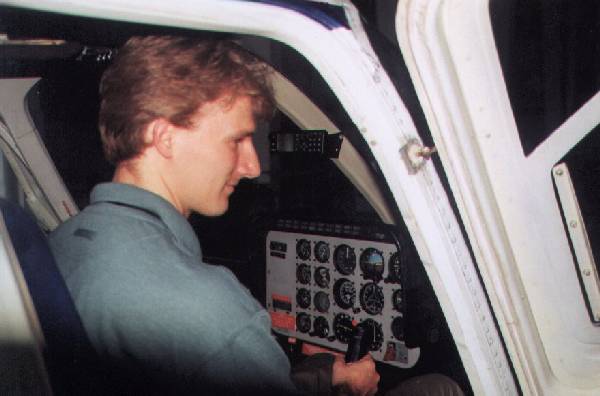
 Just kidding.
A couple of days before the race started, I was at the airport most of the day. We had some problems with the radios in the helicopters... I must have been in and out of those helicopters at least 200 times.
I did manage to get someone to take some photos of me in a helicopter, looking very much like the pilot!
I had hoped that I had the time to explore Kota Kinabalue, but we were so busy, it had to wait.
Just kidding.
A couple of days before the race started, I was at the airport most of the day. We had some problems with the radios in the helicopters... I must have been in and out of those helicopters at least 200 times.
I did manage to get someone to take some photos of me in a helicopter, looking very much like the pilot!
I had hoped that I had the time to explore Kota Kinabalue, but we were so busy, it had to wait.
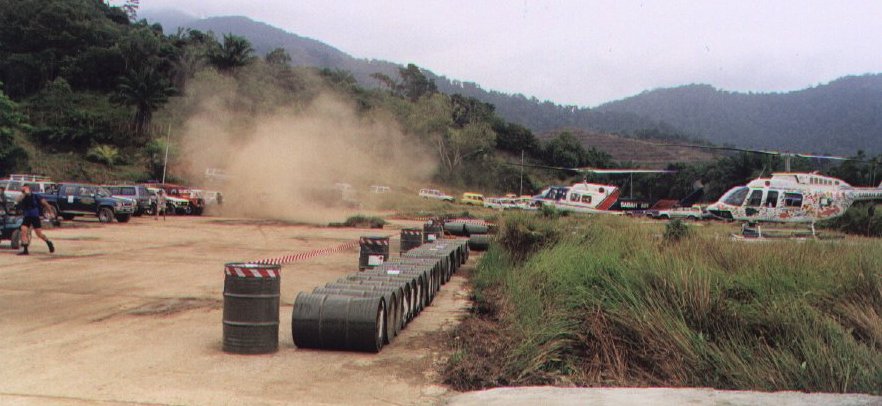 Here is the 212 or "Huey" - a twin-turbine Vietnam helicopter taking off. It is a hell a lot more powerful than some of the other helicopters we were using, which were 206s.
Here is the 212 or "Huey" - a twin-turbine Vietnam helicopter taking off. It is a hell a lot more powerful than some of the other helicopters we were using, which were 206s.
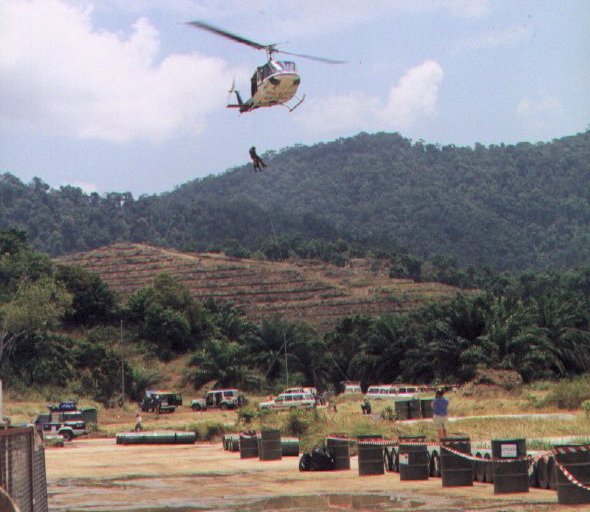 Here are the medical guys practising abseiling out of the helicopters (Aussie style)!
At the start of the race, I was sitting there listening to the first rescue on the radio.
3 hours after the start, four boats had capsized... helicopters and boats were very busy!
The competitors were due to arrive at Silam (another checkpoint) the next day (21st Aug).
For the first few days after the race started, I had to help organise to get the fuel to the top of the mountain.
After that the helicopter came in useful. It brought up 100 litres of fuel on the 4th day so I did not have to ferry fuel anymore!
Here are the medical guys practising abseiling out of the helicopters (Aussie style)!
At the start of the race, I was sitting there listening to the first rescue on the radio.
3 hours after the start, four boats had capsized... helicopters and boats were very busy!
The competitors were due to arrive at Silam (another checkpoint) the next day (21st Aug).
For the first few days after the race started, I had to help organise to get the fuel to the top of the mountain.
After that the helicopter came in useful. It brought up 100 litres of fuel on the 4th day so I did not have to ferry fuel anymore!
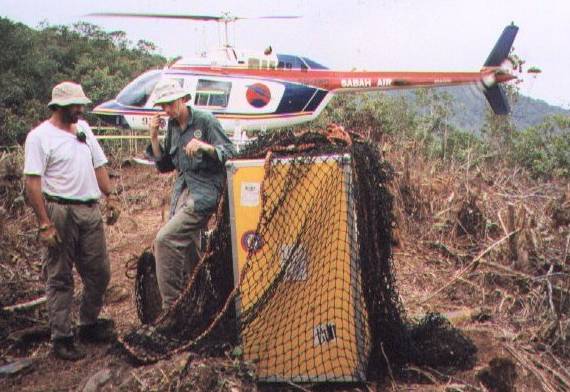
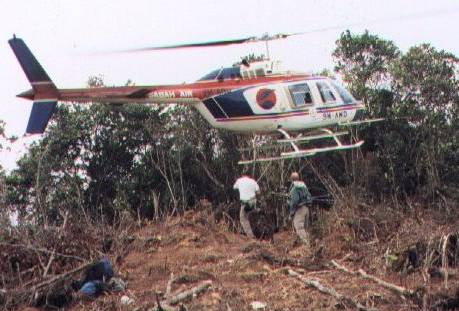 At the end of the race, we had to sling-load the repeaters, to get them off the mountain. That means we had to strap them onto the helicopters, and pull them off the mountains that way - quite effective really.
At the end of the race, we had to sling-load the repeaters, to get them off the mountain. That means we had to strap them onto the helicopters, and pull them off the mountains that way - quite effective really.
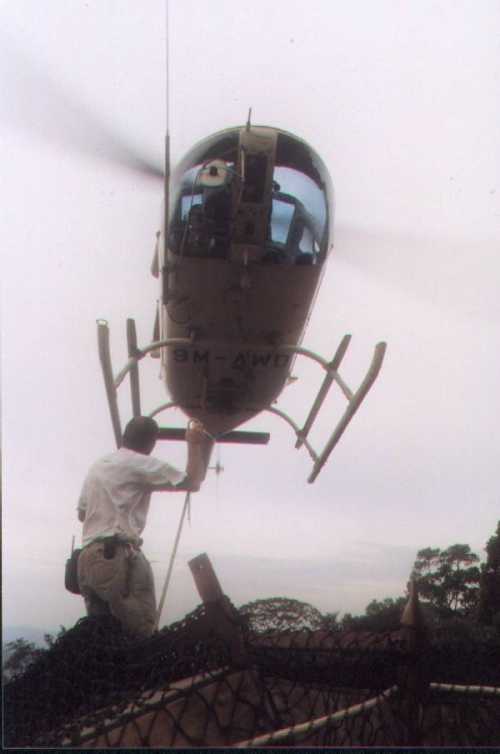

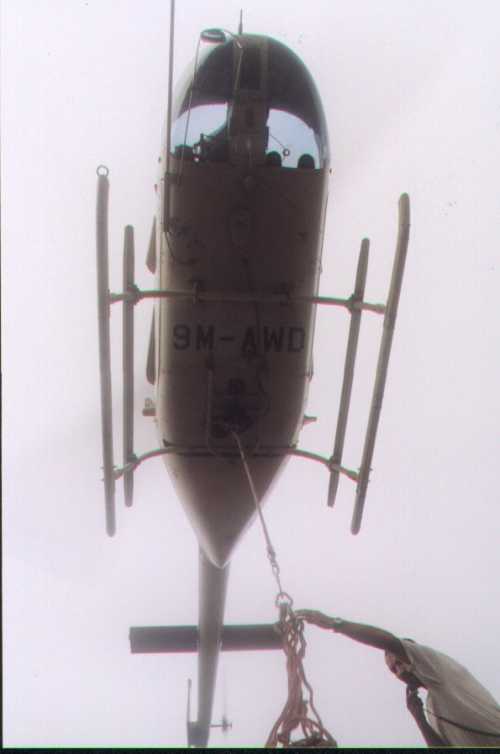
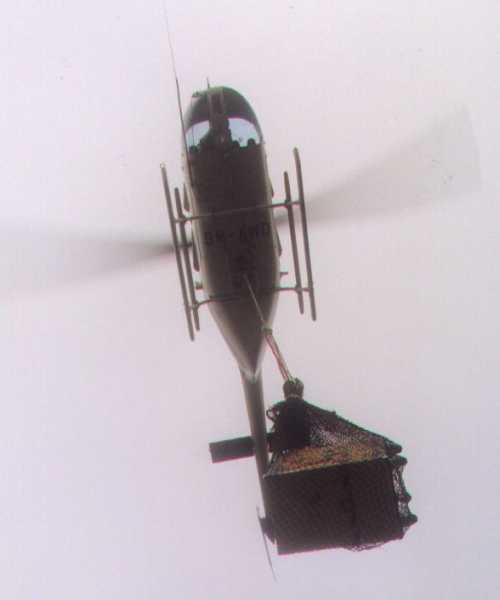

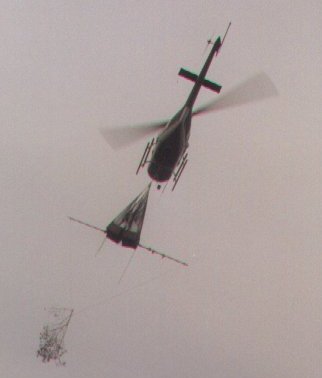
Repeater station finally airborne!
You can see a pole in the right photo.
My girlfriend asked me what it was for - it helps balance the load so that it does not keep swinging whilst airborne.
Below, you will see some pretty good photos from the chopper.
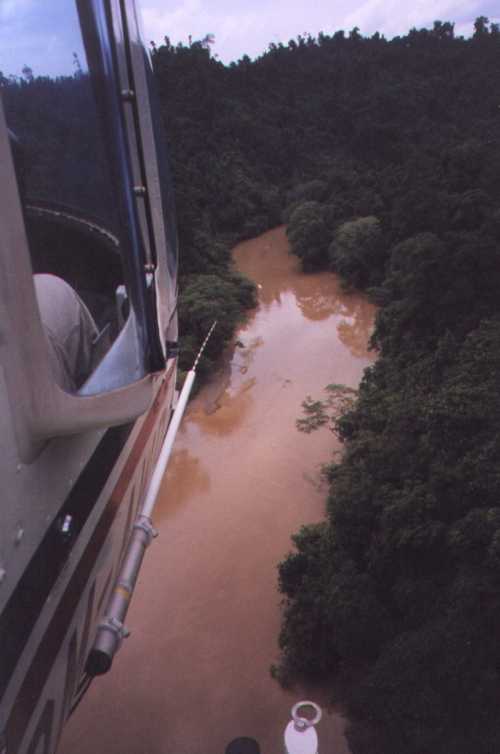

 Towards the end of the race, we had to scan the rivers for the last competitors coming in - to make sure they had completed this section of the race course. It was low-altitude flying of the river-bed.
The photo on the left shows the chopper approaching Silam Village. This village was located just outside of Silam HQ.
Towards the end of the race, we had to scan the rivers for the last competitors coming in - to make sure they had completed this section of the race course. It was low-altitude flying of the river-bed.
The photo on the left shows the chopper approaching Silam Village. This village was located just outside of Silam HQ.
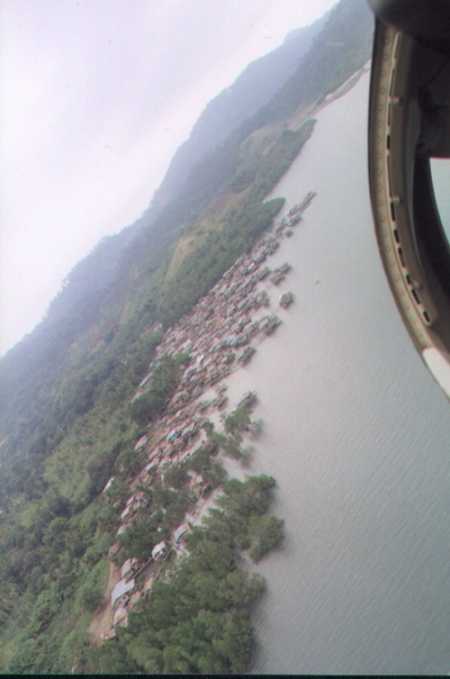
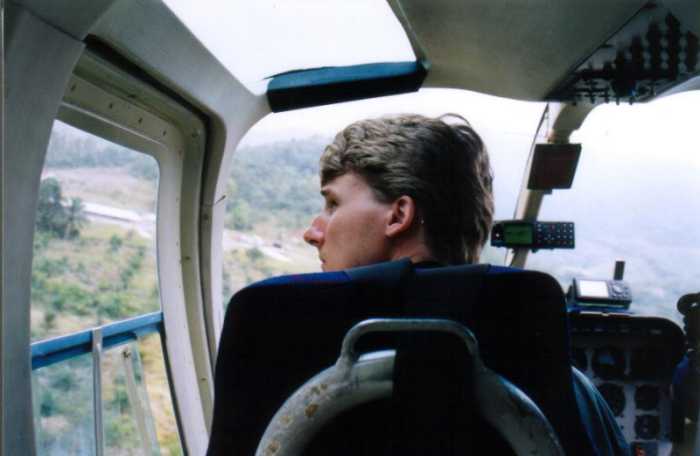 Glen liked wanted to have a photo of the back of my head - and I ruined the photo by turning my head as he took it...
Here's a sunset shot of the helicopters flying around.
I had to put in this fantastic photo - the lighting gives a really nice feel to the photo.
Glen liked wanted to have a photo of the back of my head - and I ruined the photo by turning my head as he took it...
Here's a sunset shot of the helicopters flying around.
I had to put in this fantastic photo - the lighting gives a really nice feel to the photo.
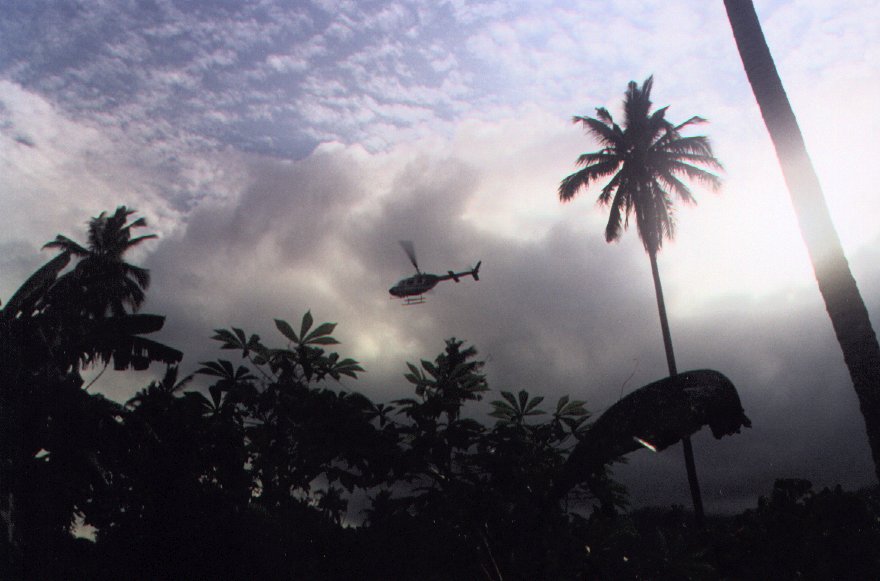 Back to TopReturn to Borneo Homepage
Back to TopReturn to Borneo Homepage
Created: 7 Dec 2001
15. August 2000 10:42
by Rene Pallesen
0 Comments
Ecochallenge ( Sabah 2000 )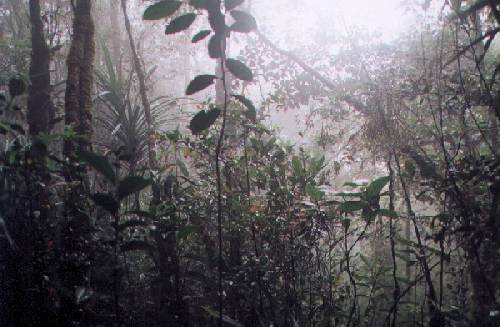
The Wildlife in Borneo . . .The jungles in Borneo are really dense, dark and humid.
You will find that some of the photos look as though they have been over-exposed, but in reality, it is just the humidity in the air.
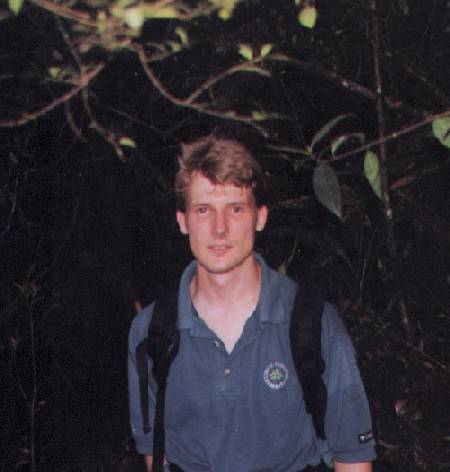
I have a photo of this at home - Glen enlarged it for me, and framed it!
Don't ask me why - I think I look rather wasted there.
Glen and I tried to race through the jungle.
The climb to the top of the mountain is rated as a 1.5 hour climb... Glen and I have done it in 26 minutes... actually I was confident that I could do it in less than 20 and so I did!
I held the record of taking 17 minutes to race to the top of Mt Silam, covering a distance of approx 4 kilometres through the jungle, up a mountain.
I was getting really fit (My girlfriend was proud of me).
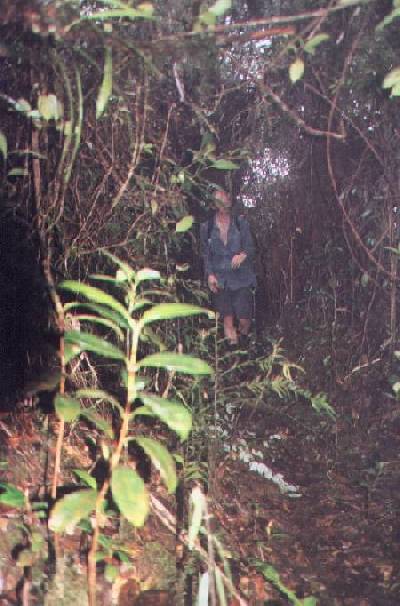


This photo shows how dense and dark the jungle can be. It was so humid there... no, not because I hadn't cleaned my lenses.

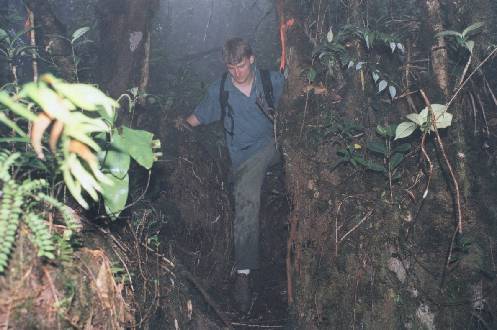 You can see how muddy it is in the jungle - I became quite dirty after many trips into the jungle.
You can see how muddy it is in the jungle - I became quite dirty after many trips into the jungle.
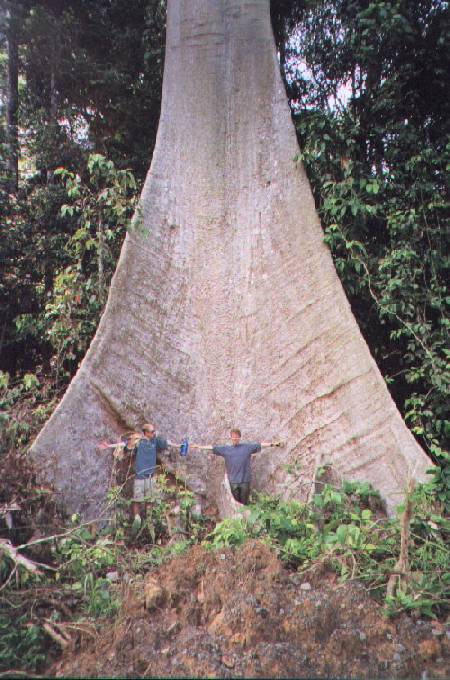
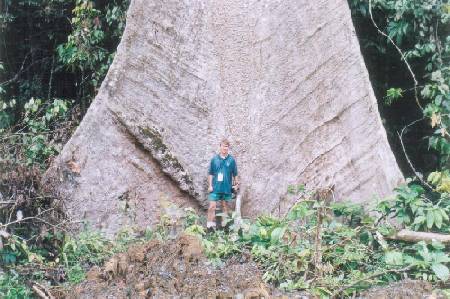

I think these trees are just as big as the Californian Redwoods. They might not be as old, but definitely just as big.
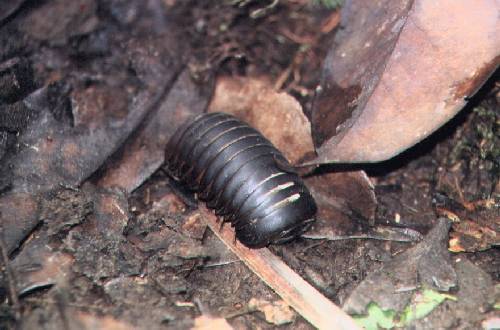
This was taken with a 300mm lens, from 1.5 metres.
The most amazing thing about them, is when they are scared, the curl up into little "marbles".
It looks like a small bug, but it is actually at least 7cm long, which is actually quite big.

I noticed in Borneo, most of the insects there were huge.
The wingspan of the brown moth was about 15cm wide - huge!
They are mostly active at night, which is quite common for creatures in the jungle.
A couple of the girls stationed in the jungles, was stationed here. Not a wise decision, considering these girls were paranoid about the insects.
(Note: in the photo below, I still had conjunctivitis) I had the red eyes for most of the trip.


Big and beautiful, don't you think? You can see how big the black moth is compared to the size of the telephone.



These plants were kind of special because each branch split into two, so by the end of it, they formed a hexagonal pattern.
Below, are plants known as the "pitcher" plant.
The pitcher plants are meat-eating plants - you have watch out not to fall into them because they will swallow you whole.
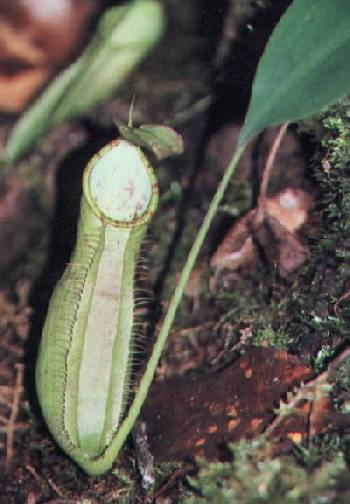
If you just believed that, you are very gullible! *laugh*
The pitcher plant, like other carnivorous plants, feed on insects.
They have sweet-smelling nectar that attract the unsuspecting insect to it.
When the insect lands, it finds the surface slippery and fall straight into the “pitcher”, where the plants juices drowns it and is digested by the plant.
You may have heard of other type of carnivorous plants such as the Venus Fly Trap, and the Sundew plants.
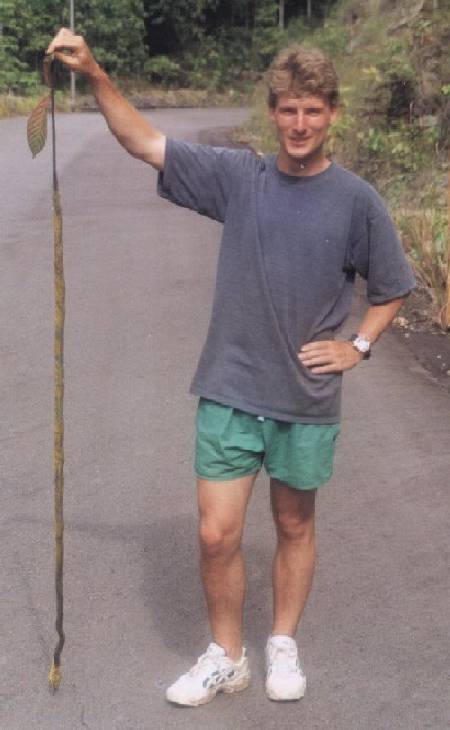
Yes, you see me holding the snake with a leaf.
It was a poisonous snake, and I was worried about it's venom getting on my skin.
For example a puff adder, contact with the venom numbs the skin.
I was not familiar with the snakes in Borneo, and was not about to risk it.
 The tarantella was sitting inside the catering tent hunting.
Everyone was looking at it and admiring it, which was pretty amazing, considering I know many people who would willingly kill a spider in sight.
The tarantella was sitting inside the catering tent hunting.
Everyone was looking at it and admiring it, which was pretty amazing, considering I know many people who would willingly kill a spider in sight.